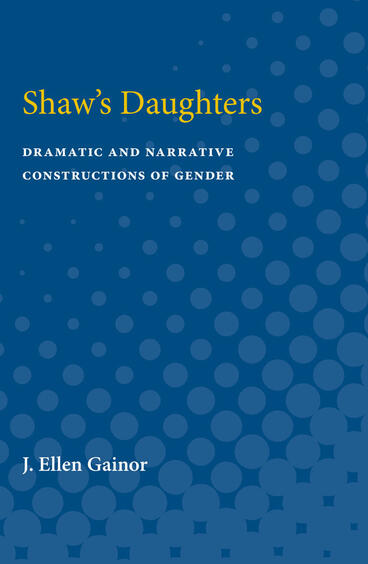Shaw's Daughters
Dramatic and Narrative Constructions of Gender
Description
For almost a century critics of George Bernard Shaw's dramatic works have accepted the characterization of Shaw as an artist and thinker well ahead of his time with regard to social issues—women's liberation in particular. Since the first wave of feminist criticism in the 1960s and 1970s, however, very little effort has been made to examine Shaw's works in the light of the most recent and challenging developments in feminist theory and gender studies. Now, at a time of renewed historical interest in his plays, J. Ellen Gainor brings the critical understanding of Shaw's work into the present day.
Gainor introduces previously unexamined reviews and articles by Shaw's female contemporaries—and discovers among them a remarkable resistance to his depictions of women. Through an analysis of three major character tropes Gainor discovers dramaturgical patterns in Shaw's gender construction that work against the contention that the author created positive and progressive images of women and that situate his work well within the dominant social ideologies of the late Victorian and Edwardian eras.
Gainor demonstrates that positioning Shaw firmly among his contemporaries may actually resolve some of the troubling issues in his dramaturgy, allowing us to understand more clearly the origins of a number of his female character types, and even to see continuities throughout his work where they have not been shown before.

